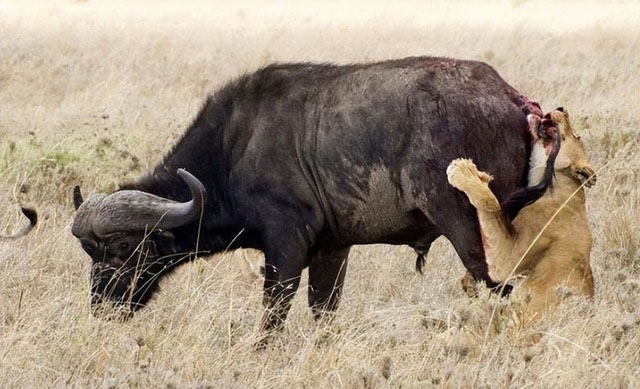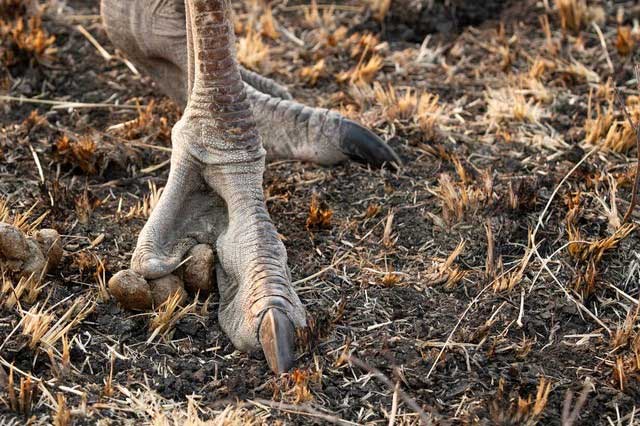Why do lions, known as 'top predators', rarely hunt ostriches?
Although ostriches have excellent self-defense abilities, why do lions, the top predators on the African grasslands, rarely eat ostriches?
In our impression, the African buffalo is always considered the lion's main prey. Although it is a herbivore, this animal has great fighting power. An adult African buffalo is about 2.1 to 3.4 meters long, average height is about 1.5 meters and weighs 500 to 800kg.

In the lion's diet, African buffalo accounts for 65%, giraffes and zebras account for 21%, warthogs and wildebeest account for 11%, other animals account for 3% and ostriches account for less than first%. So why are African ostriches about 180 to 300 cm long, 240 to 280 cm tall and weigh from 130 to 150 kg? It has an average lifespan of 60 years and does not have such a small percentage of attack "weapons" like the African buffalo?
Compared to other prey such as zebra, antelope, deer, etc., ostriches have significantly less meat. Most of an ostrich's body consists of bones, necks, and feathers, making it inefficient to consume energy to hunt them.
1. Ostriches are highly alert
Although ostriches have lost the ability to fly due to their large size during evolution, they still belong to the Bird class. The vigilance of birds that can be seen in sparrows, pigeons, magpies and other common birds around us is extremely high.
Ostriches will also be much more alert than African buffalos, giraffes, zebras, etc. Even when drinking water, there will be specialized ostriches guarding them.
The terrain of the African savannah is flat and the African ostrich possesses an average height of 2.5 meters, an ostrich of such height can easily have a wide vision, whereby they can easily spot the lion and run away before being caught in the lion's sights.

Ostriches have the largest eyes on land, with a diameter of up to 5 cm, helping them observe a wide range of surroundings. Their eyes are placed high on their heads, allowing them to see enemies from afar, even when crouching to feed. This animal also has very sensitive hearing and can hear sounds from kilometers away. This helps them detect the footsteps of potential predators and promptly warn the herd.
2. Ostriches run fast
The evolution of species in nature is ongoing. Although ostriches have lost the ability to fly and often weigh up to 150 kg, their long legs and slim neck make up 2/3 of their body.
The distance per step of an adult ostrich can reach 3 to 5 meters and the running speed can reach 70km/h. Imagine you are driving a car and stepping on the accelerator at a speed of 70km/h, you will understand how fast an ostrich is.
Meanwhile, lions can run up to 80km/h, this number shows that it seems that lions are faster than ostriches, but in reality, in this race lions have absolutely no advantage. Although lions can move at speeds of up to 80km/h, due to their large size and limited physical strength (their hearts are very small compared to their entire bodies), they can often only sustain This speed is for 3 minutes . Ostriches can run at a speed of 70 km/h for more than 5 minutes, some even exceeding 10 minutes. Accordingly, it can be seen that chasing an ostrich is extremely difficult for a lion.

Ostriches are the fastest birds on land, able to reach speeds of up to 70 km/h. This makes it difficult for lions to approach and take down ostriches.
3. Ostriches can attack lions in return
When lions hunt, even if they hunt wild buffalo, they will basically prioritize old buffalo or young animals because their reactions are relatively slow, and this is completely different from ostriches.
The reason they do not dare to confront an adult wild buffalo is because the creatures at the top of the food chain know how to seek advantages and avoid disadvantages. If a lion is gored by an adult wild buffalo, its bones are broken or a hole is punctured in its body, it is likely that the lion will face a slow and painful death.
And ostriches also have the ability to attack lions with great damage. Ostriches can kick very hard with both legs. Their kicking force is strong enough to break ribs or even kill a wolf. In addition, this animal has sharp claws on both legs - up to 7 cm long. These claws can cause serious injuries, even death, to lions if attacked in the eyes or neck.

Hunting ostriches poses many risks for lions. Ostriches possess two sharp, dagger-like claws on each foot, which can cause serious injuries, even death, to an attacker if kicked in a weak spot, or even a lion can be killed. exhausted during the chase.
- Video: Lion bites and kills two leopards
- Interesting thing about animals
- Video: A close-up of the horrifying battle of lions
- Why do lions prefer to hunt porcupines whether they can be hurt or die of porcupine?
- Why do African lions dare to hunt wild buffalo weighing nearly 1 ton but do not dare to hunt rhino?
- Bloody hippos with lions
- Attack on lions, wildebeest pay for their lives
- Lions can become extinct because of lack of food
- Discovering the sea lion's secret of deep hunting
- The first white lion in South America
- Male lions abandon their partners to hunt antelopes
- Why are terrestrial predators smaller than elephants?
 'Fine laughs' - Scary and painful torture in ancient times
'Fine laughs' - Scary and painful torture in ancient times The sequence of numbers 142857 of the Egyptian pyramids is known as the strangest number in the world - Why?
The sequence of numbers 142857 of the Egyptian pyramids is known as the strangest number in the world - Why? History of the iron
History of the iron What is alum?
What is alum?